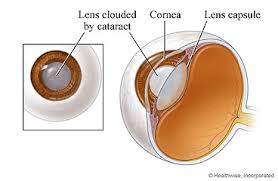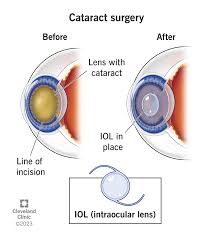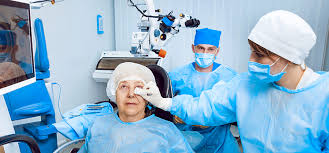Cataract Surgery
Ashawadi Foundation arranges a eye testing camp at various location with the help of listed hospital where a team of doctor used to check patient eye and shortlist patient being identified for Cataract Surgery. We take Identified Patient to the hospital next day. We provide free transportation from Camp location to Hospital and returned back to camp location next day, apart from transportation hospital provides free stay overnight in hospital with free Food, while returning every patient receives free medicine and sunglass. We keep on receiving thanks from benefited public from various location. We are proud to say that we have completed 100+ Cataract Surgery and will continue doing these services for our society, mainly who are really in need of these services.
HOW TO IDENTIFY CATARACT ISSUE
Cataracts can cause various problems for patients, primarily related to vision. Here are some common issues cataract patients may experience :
Blurry Vision – Cataracts cloud the lens of the eye, causing blurred or hazy vision. This makes it difficult to see fine details.
Difficulty with Night Vision – Patients often struggle to see in low-light conditions, making activities like driving at night particularly challenging.
Sensitivity to Light – Bright lights or glare can be uncomfortable for cataract patients. They might experience halos around lights, especially at night.
Faded or Yellowed Colors – Cataracts can affect color perception, making colors look dull, yellowed, or less vibrant.
Double Vision in One Eye – Some cataract patients report seeing double images (monocular diplopia), which can be disorienting.
Frequent Prescription Changes – As cataracts progress, patients may notice that their glasses or contact lenses need to be updated more often, but even these adjustments may not fully correct their vision.
Difficulty Reading or Performing Close Work – Blurry vision and poor contrast sensitivity can make it harder to read books, newspapers, or small print.
Reduced Depth Perception – Cataracts can affect depth perception, increasing the risk of falls or accidents.
Patient must consult Doctor if they experience Rapidly worsening vision, Increased difficulty with daily tasks or any sudden pain or changes in their vision, they should consult an ophthalmologist. Cataract surgery is the definitive treatment, and it is safe and highly effective for restoring vision.



PROCEDURE OF CATARACT SURGERY
Cataract surgery is a common and safe procedure that involves removing the cloudy lens of the eye and replacing it with an artificial lens to restore clear vision. Here’s an overview of the process:
PRE-SURGERY PREPARATION
Comprehensive Eye Exam – Your doctor will assess the size, shape, and health of your eye to plan the surgery.
2. Lens Measurement – Measurements of your eye will determine the correct power of the intraocular lens (IOL) to be implanted.
3. Discussing IOL Options – There are various types of lenses (e.g., monofocal, multifocal, or toric lenses for astigmatism). Your doctor will help you choose the best option.
DURING CATARACT SURGERY
Anesthesia: Usually, local anesthesia (eye drops or injections) is used to numb the eye. You may also receive a mild sedative to help you relax.
Sterilization: The eye and surrounding area will be cleaned, and a sterile drape will be placed over your face.
SURGICAL PROCEDURE :
Small Incision: A tiny incision is made on the cornea to access the lens.
Lens Removal (Phacoemulsification) An ultrasound probe breaks the cloudy lens into tiny pieces. These pieces are suctioned out through the incision.
IOL Implantation: A folded artificial lens is inserted through the incision. The lens unfolds and is positioned in the natural lens capsule.
Closure: In most cases, the incision is self-sealing and does not require stitches.
You’ll rest for a short time in the recovery area before being discharged. Vision may be blurry immediately after surgery, but it typically improves within a few days.
